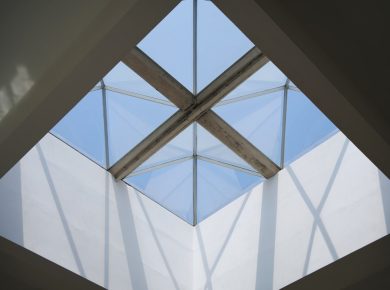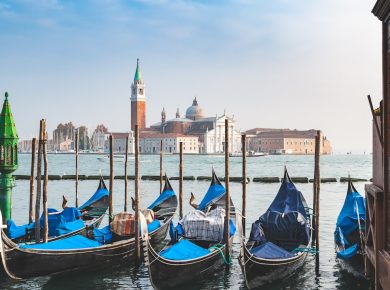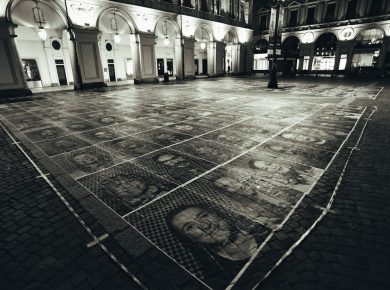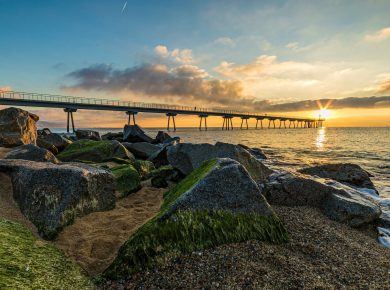The Basilica di Santa Maria della Salute, commonly referred to as La Salute, is a prominent church in Venice, Italy. It was built as a votive offering to the Virgin Mary in gratitude for the city’s deliverance from the plague of 1630, which decimated a large portion of Venice’s population. The Venetian Senate pledged to construct a church dedicated to the Virgin Mary if the city was spared from further devastation.
Following the plague’s decline, the Senate commissioned the basilica’s construction, with renowned architect Baldassare Longhena designing the structure. Construction began in 1631 and was completed in 1687, establishing the basilica as one of Venice’s most significant landmarks. The basilica’s location is historically important, situated on a narrow strip of land between the Grand Canal and the Bacino di San Marco, offering a panoramic view of the Venetian lagoon.
Its distinctive octagonal design and prominent dome make it a recognizable feature of the Venetian skyline. The Basilica di Santa Maria della Salute serves as a symbol of Venetian resilience and faith, with its origins deeply embedded in the city’s history and culture.
The Architectural Design and Features of the Basilica
Exterior Design and Ornamentation
The exterior of the basilica is adorned with intricate details, including statues, columns, and ornate decorations that reflect the wealth and power of Venice during the Baroque period.
Interior Beauty and Artistic Treasures
The interior of the basilica is equally impressive, with a large central nave flanked by side chapels adorned with magnificent works of art. The high altar is adorned with a stunning marble sculpture of the Virgin Mary, while the walls and ceilings are decorated with elaborate frescoes and paintings by renowned artists such as Titian and Tintoretto.
A Testament to Artisanal Skill and Craftsmanship
The basilica’s design and features are a testament to the skill and craftsmanship of the artisans and craftsmen who contributed to its construction, making it a must-see destination for visitors to Venice.
The Historical Significance of Basilica di Santa Maria della Salute

The Basilica di Santa Maria della Salute holds immense historical significance for the city of Venice. Its construction was initiated as a result of a solemn vow made by the Venetian Senate during the devastating plague of 1630. The basilica stands as a symbol of hope and faith, commemorating the city’s deliverance from the deadly epidemic.
The annual festival of La Festa della Salute, held on November 21st, is a testament to the historical significance of the basilica, as it commemorates the end of the plague and celebrates the city’s resilience and unity. Furthermore, the basilica’s location at the entrance to the Grand Canal makes it a prominent landmark in Venice’s maritime history. It serves as a beacon for sailors and travelers entering the city, symbolizing protection and salvation.
The Basilica di Santa Maria della Salute is not only a place of worship but also a living testament to Venice’s rich history and cultural heritage.
Art and Decorations Inside the Basilica
The interior of the Basilica di Santa Maria della Salute is adorned with an impressive collection of art and decorations that reflect the wealth and power of Venice during the Baroque period. The high altar is adorned with a magnificent marble sculpture of the Virgin Mary, created by renowned sculptor Giuseppe Torretti. The walls and ceilings are adorned with elaborate frescoes and paintings by prominent artists such as Titian, Tintoretto, and Palma il Giovane, depicting scenes from the life of the Virgin Mary and other religious themes.
The basilica’s chapels are also adorned with stunning works of art, including sculptures, paintings, and decorative elements that showcase the skill and craftsmanship of Venetian artisans. The intricate details and opulent decorations inside the basilica make it a treasure trove of Baroque art and a testament to Venice’s cultural and artistic heritage.
The Role of Basilica di Santa Maria della Salute in Venetian Culture and Traditions
The Basilica di Santa Maria della Salute plays a significant role in Venetian culture and traditions, serving as a symbol of hope, faith, and unity for the city. The annual festival of La Festa della Salute is one of Venice’s most important cultural events, attracting locals and visitors alike to celebrate the city’s deliverance from the plague. The festival includes religious processions, traditional boat races, and various cultural events that showcase Venice’s rich heritage.
The basilica also holds religious significance for Venetians, serving as a place of worship and pilgrimage for those seeking solace and spiritual guidance. Its location at the entrance to the Grand Canal makes it a prominent landmark in Venice’s maritime history, symbolizing protection and salvation for sailors and travelers entering the city. The Basilica di Santa Maria della Salute is deeply ingrained in Venetian culture and traditions, serving as a source of inspiration and pride for the city’s residents.
Restoration and Preservation Efforts of the Basilica

Challenges to Preservation
In response to these challenges, various restoration projects have been undertaken to repair and maintain the basilica’s architectural features, decorative elements, and works of art.
Notable Restoration Efforts
One notable restoration effort took place in the 20th century when extensive work was carried out to address structural issues caused by subsidence and water damage.
Ongoing Preservation Efforts
More recently, ongoing efforts continue to preserve and protect the basilica’s art and decorations from deterioration due to aging and environmental factors. These restoration and preservation efforts are crucial in ensuring that future generations can continue to appreciate the beauty and historical significance of this iconic landmark in Venice.
Visiting Basilica di Santa Maria della Salute: What to Expect
Visitors to Venice should not miss the opportunity to visit the Basilica di Santa Maria della Salute, one of the city’s most iconic landmarks. Upon entering the basilica, visitors will be greeted by its grand interior adorned with stunning works of art, including sculptures, paintings, frescoes, and decorative elements that reflect Venice’s rich cultural heritage. The high altar with its marble sculpture of the Virgin Mary is a sight to behold, as are the chapels adorned with magnificent art pieces by renowned artists.
In addition to its artistic treasures, visitors can also take in breathtaking views of Venice from the basilica’s terrace, which offers panoramic vistas of the city and its surrounding lagoon. The annual festival of La Festa della Salute on November 21st is an excellent time to visit, as it provides an opportunity to experience traditional Venetian culture and celebrations. Whether for its historical significance, architectural beauty, or cultural importance, a visit to Basilica di Santa Maria della Salute is sure to leave a lasting impression on anyone who has the privilege to experience it firsthand.
If you’re interested in the history of Italian landmarks, you may also enjoy reading about the Trevi Fountain in Rome. This stunning Baroque fountain has a fascinating history and is a must-see for anyone visiting the Eternal City. You can learn more about it in this article.









